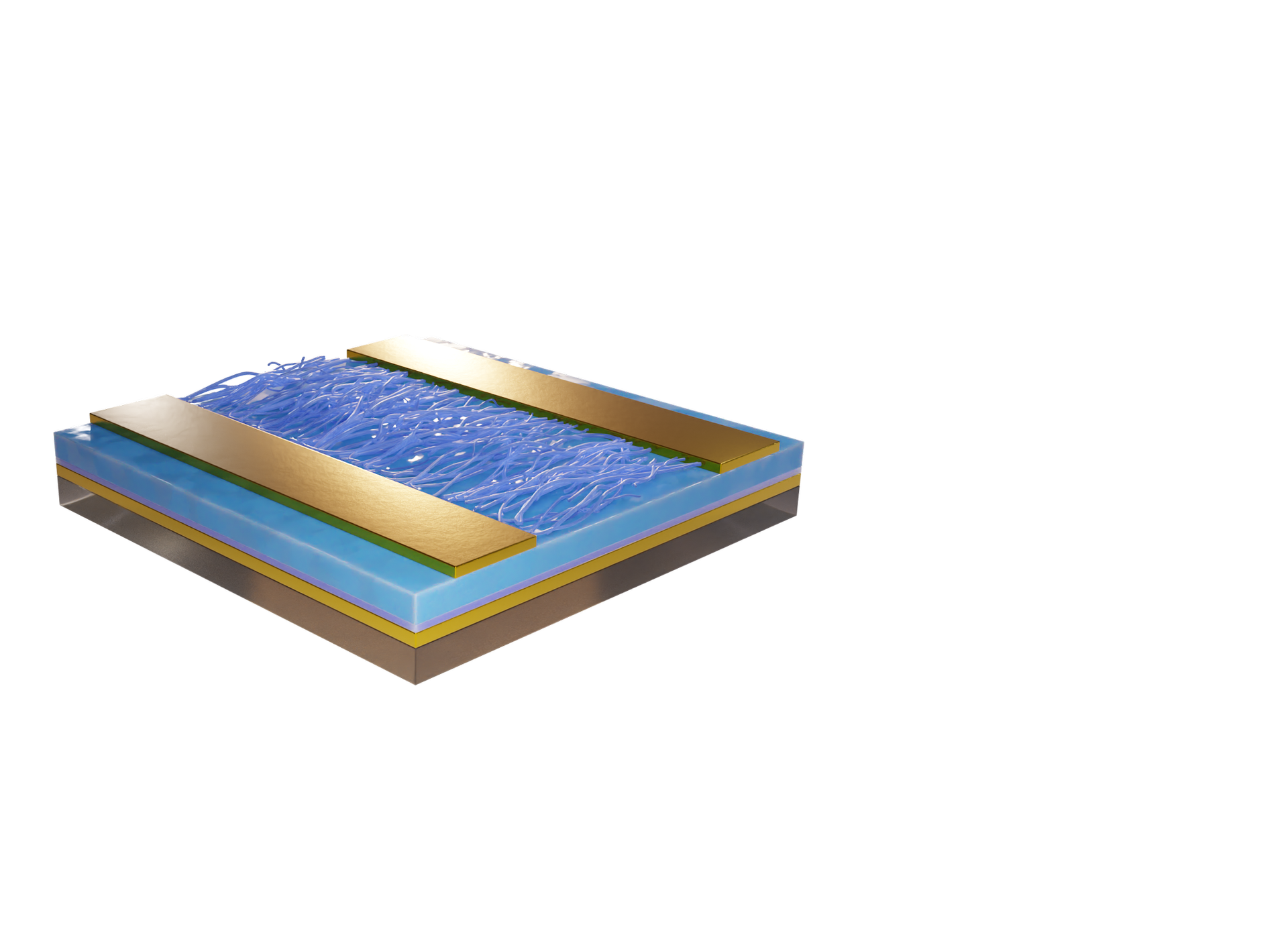
Research

Carbon Based Thin Film Transistors (TFTs)
With the rise of flexible, inexpensive technology, it is believed that demand for carbon based circuitry will exceed that of silicon electronics. Thin film transistors (TFT), are simple electrical switches used as logic gate operators and are critical to the operation of all electrical circuits. Flexible, bendable, wearable electronics rely on high performing carbon-based transistors. The key to maximizing performance is to develop all elements of the TFT simultaneously as device function relies heavily on interfacial energy charging and transfer processes. Our group therefore has interests in design and evaluation of high-performance carbon-based semiconductors (e.g: organic dyes and single walled carbon nanotubes) and well-defined functional polymer based gating materials. We tune molecular structure to enable favourable self assembly and solid-state arrangement all while optimizing the critical interfaces and morphology to provide next generation electronics.

Low-cost Sensors
Point-of-source sensors represent the future of agriculture, manufacturing, medicine, and more. Electrical sensors are inherently less expensive and less cumbersome than optical or spectroscopic based sensors. Printed electronics enable low cost development of sensors and the use of organic semiconductors provides a tunable platform for highly specific and sensitive sensors. Our interests are in the development of chemical and biological sensors for improved process optimization and health. Through choice of carbon semiconductor and the manufacturing process we can optimize the selectivity, sensitivity and drop the limit of detection. Our cannabinoid sensors have led to commercial success through our spin off company: Ekidna Sensing inc. Several other projects within our group build on international collaborations and explore the development of sensors for key biomarkers and for prohibited or toxic substances.

Silicon Phthalocyanines
SiPcs are a class of metal phthalocyanine (MPc) that has recently attracted interest from our group and several others. Due to the oxidation state of the silicon, we observe two axial bonds that are perpendicular to the aromatic macrocycle. These axial bonds serve as chemical handles to impart solubility and tune surface and bulk properties without having a significant effect on the optical and electrochemical properties, a significant advantage over divalent MPcs such as copper phthalocyanine (CuPc) or zinc phthalocyanine (ZnPc). Interestingly, R2-SiPc derivatives appear to inherently behave as n-type semiconductors: they favour the transport of electrons over holes, which is uncommon for MPcs. Our group focuses on the synthesis, characterization and integration of this exciting class of materials into thin film electronics

Functional Polymers
Polymer dielectrics are a key component of organic thin film transistors, capacitors, and other electrical sensors. Our group designs, synthesizes, and characterizes different electrical and structural properties of novel polymers and their blends. We specifically prioritize bioderived and biodegradable materials and apply our considerable experience with nitroxide mediated polymerization to create purpose built, scalable, and green materials for next generation flexible organic electronics. Our main polymer research focuses on the design of novel random and block copolymers for OTFTs and sensors, the study of interfacial interactions between device layers, and the development of cross-linking functionalities to optimize device performance while building in recyclability and industrial scalability.



